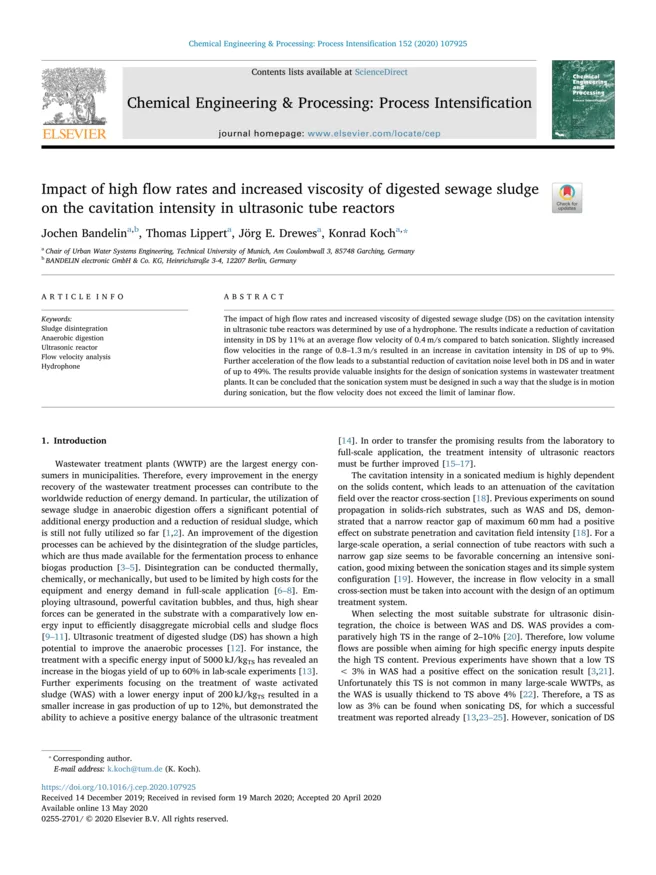The impact of high flow rates and increased viscosity of digested sewage sludge (DS) on the cavitation intensity in ultrasonic tube reactors was determined by use of a hydrophone. The results indicate a reduction of cavitation intensity in DS by 11% at an average flow velocity of 0.4 m/s compared to batch sonication. Slightly increased flow velocities in the range of 0.8–1.3 m/s resulted in an increase in cavitation intensity in DS of up to 9%. Further acceleration of the flow leads to a substantial reduction of cavitation noise level both in DS and in water of up to 49%. The results provide valuable insights for the design of sonication systems in wastewater treatment plants. It can be concluded that the sonication system must be designed in such a way that the sludge is in motion during sonication, but the flow velocity does not exceed the limit of laminar flow.
Bandelin et al. 2020
Neuer Zeitschriftenbeitrag von Bandelin et al. 2020
